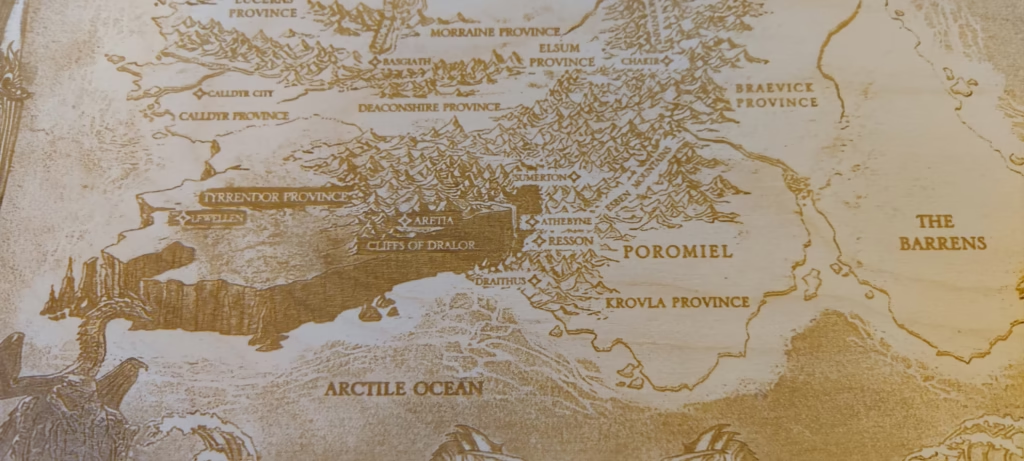
Iron flame maps have captured the interest of enthusiasts, scientists, and even casual observers due to their unique combination of science, artistry, and functionality. In this article, we will explore everything you need to know about iron flame maps—what they are, their origins, how they work, and their applications. With detailed insights and expert perspectives, this guide will illuminate the intriguing details behind these maps.
What Are Iron Flame Maps?
Iron flame maps are intricate visual representations of thermal patterns, often created to depict heat distribution and flame behavior on iron surfaces. These maps can range from scientific diagrams used in engineering and material science to artistic renderings showcasing abstract interpretations of thermal activity.
The Science Behind Iron Flame Maps
The creation of iron flame maps is deeply rooted in thermal dynamics and material science. When heat interacts with iron, it produces distinct patterns and gradients, which can be visualized using specialized tools and techniques. These patterns result from the way iron conducts heat, its emissivity properties, and the ambient conditions surrounding the material.
For instance, when a flame is applied to an iron surface, the heat spreads unevenly due to variations in material density, impurities, and structural composition. By capturing these variations, scientists and engineers can generate maps that visually represent the temperature distribution.
Why Are They Called “Iron Flame Maps”?
The term “iron flame map” originates from the fusion of two key elements: the medium (iron) and the source of heat (flame). These maps are often associated with iron due to its widespread use in industries and its unique thermal properties. The “map” aspect refers to the graphical representation of the heat distribution, which often resembles geographical maps with contours and gradients.
Artistic Interpretations of Iron Flame Maps
Beyond their scientific applications, iron flame maps have also inspired artists to create visually stunning pieces that mimic the intricate patterns of heat and flame on iron surfaces. These artistic renditions often emphasize the aesthetic appeal of thermal gradients, using vibrant colors and abstract designs to capture the viewer’s imagination.
The Origins and History of Iron Flame Maps
The concept of mapping heat and flame patterns is not entirely new. Historical records suggest that blacksmiths and metalworkers in ancient civilizations were aware of the heat distribution on iron surfaces, even if they didn’t have the tools to create detailed maps. Let’s take a closer look at how iron flame maps evolved over time.
Early Observations in Metalworking
In ancient times, blacksmiths observed how heat traveled through iron while forging tools and weapons. They relied on their intuition and experience to determine the right temperature for working with the metal. Though these early observations were not documented as maps, they laid the foundation for understanding thermal behavior.
The Advent of Modern Science
The development of thermodynamics in the 18th and 19th centuries marked a significant turning point in the study of heat distribution. Scientists began using mathematical models and experimental techniques to analyze how heat interacted with different materials. With the invention of thermographic imaging in the 20th century, it became possible to create detailed visual representations of thermal patterns, giving rise to what we now call iron flame maps.
Recent Developments
Today, iron flame maps are more sophisticated than ever, thanks to advancements in technology. High-resolution thermal cameras, computer simulations, and data analysis tools have made it easier to create accurate and detailed maps. These developments have expanded the applications of iron flame maps across various industries, from engineering and manufacturing to art and design.
How Iron Flame Maps Are Created
Creating an iron flame map is a complex process that involves a combination of scientific techniques, specialized equipment, and artistic sensibility. Here’s a step-by-step overview of how these maps are typically made.
Step 1: Preparing the Iron Surface
The first step in creating an iron flame map is to prepare the iron surface. This involves cleaning the surface to remove any dirt, rust, or impurities that could affect the heat distribution. In some cases, the surface may be polished or coated to enhance its thermal properties.
Step 2: Applying Heat
Once the surface is prepared, heat is applied using a flame or another heat source. The heat source can vary depending on the purpose of the map. For scientific studies, a controlled and consistent heat source is often used to ensure accuracy. For artistic purposes, the heat application may be more experimental and varied.
Step 3: Capturing Thermal Patterns
As the heat interacts with the iron surface, it creates distinct thermal patterns that can be captured using thermal imaging cameras or other sensing devices. These tools detect the infrared radiation emitted by the heated iron and convert it into a visual representation of the temperature distribution.
Step 4: Analyzing and Refining the Map
The captured thermal patterns are then analyzed and refined to create a final map. This process may involve using software to enhance the visual details, adjust the color gradients, and add annotations or labels. In scientific applications, data analysis tools are often used to extract quantitative information from the map.
Applications of Iron Flame Maps
Iron flame maps have a wide range of applications across different fields, from engineering and material science to art and design. Let’s explore some of the most common uses of these fascinating maps.
Engineering and Material Science
In engineering and material science, iron flame maps are used to study the thermal properties of iron and other metals. These maps provide valuable insights into how heat spreads through a material, which can help engineers design more efficient heat exchangers, improve welding techniques, and optimize manufacturing processes.
For example, in the automotive industry, iron flame maps can be used to analyze the heat distribution in engine components, ensuring that they can withstand high temperatures without failing. Similarly, in aerospace engineering, these maps can help identify potential weak points in metal structures subjected to extreme heat.
Art and Design
Artists and designers have also embraced iron flame maps as a source of inspiration for their work. The intricate patterns and vibrant colors of these maps make them ideal for creating visually striking pieces of art. From abstract paintings and digital art to sculptures and installations, iron flame maps have inspired a wide range of creative projects.
Some artists even use the actual process of creating iron flame maps as part of their artistic practice, experimenting with different heat sources and techniques to produce unique patterns on metal surfaces.
Education and Research
In educational settings, iron flame maps serve as a valuable tool for teaching students about thermal dynamics and material science. By visualizing how heat interacts with iron, students can gain a deeper understanding of key concepts and principles.
Researchers also use iron flame maps to study the behavior of materials under different thermal conditions. This research can lead to new discoveries and innovations in fields such as metallurgy, physics, and engineering.
The Future of Iron Flame Maps
As technology continues to advance, the future of iron flame maps looks brighter than ever. New tools and techniques are constantly being developed, making it easier to create more detailed and accurate maps. Let’s take a look at some of the trends and innovations shaping the future of this field.
Advances in Thermal Imaging Technology
One of the most significant developments in recent years is the advancement of thermal imaging technology. Modern thermal cameras are capable of capturing high-resolution images with precise temperature measurements, enabling the creation of highly detailed iron flame maps. Future innovations in this area could include more affordable and portable devices, making this technology accessible to a wider audience.
Integration with Artificial Intelligence
Artificial intelligence (AI) is another area that holds great promise for the future of iron flame maps. By integrating AI algorithms with thermal imaging data, it’s possible to automate the analysis and interpretation of iron flame maps. This could lead to faster and more accurate insights, as well as new applications in fields such as predictive maintenance and quality control.
Expanding Artistic Possibilities
As artists continue to explore the creative potential of iron flame maps, we can expect to see even more innovative and boundary-pushing projects in the future. From interactive installations that respond to heat and touch to virtual reality experiences that immerse viewers in the world of thermal patterns, the possibilities are virtually endless.
Conclusion
Iron flame maps are a fascinating intersection of science, art, and technology. Whether you’re a scientist studying thermal dynamics, an artist seeking inspiration, or simply someone with a curiosity about the world, these maps offer a unique window into the behavior of heat and flame. With their rich history, diverse applications, and promising future, iron flame maps are sure to continue captivating our imagination for years to come.



